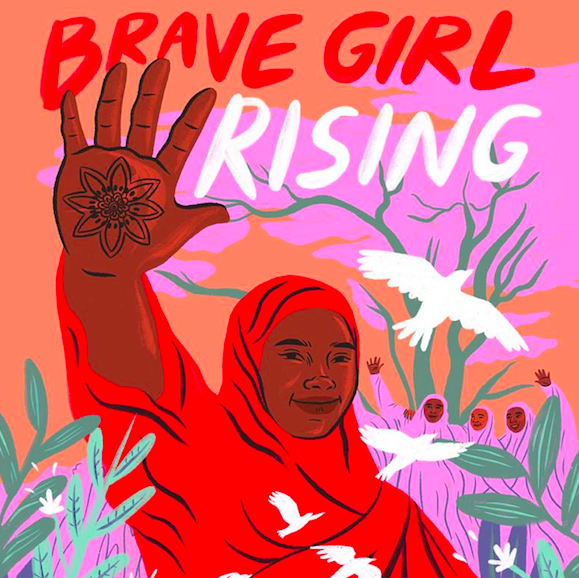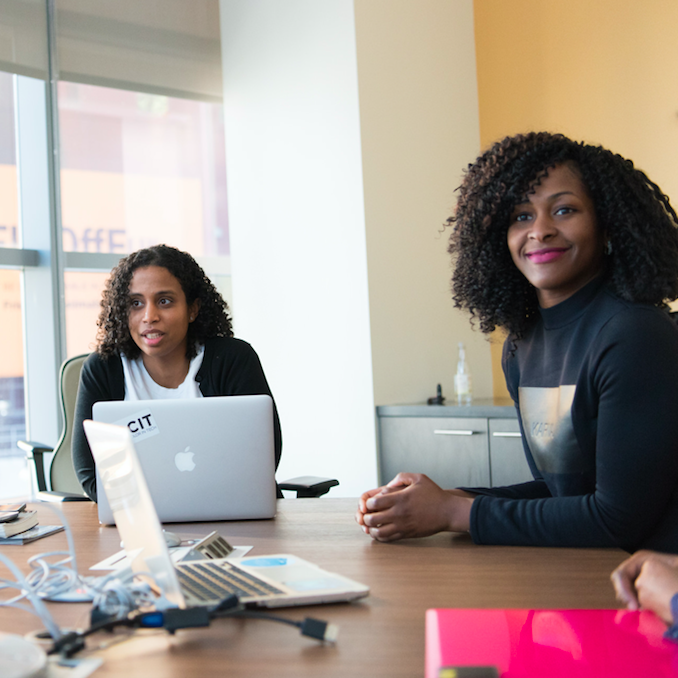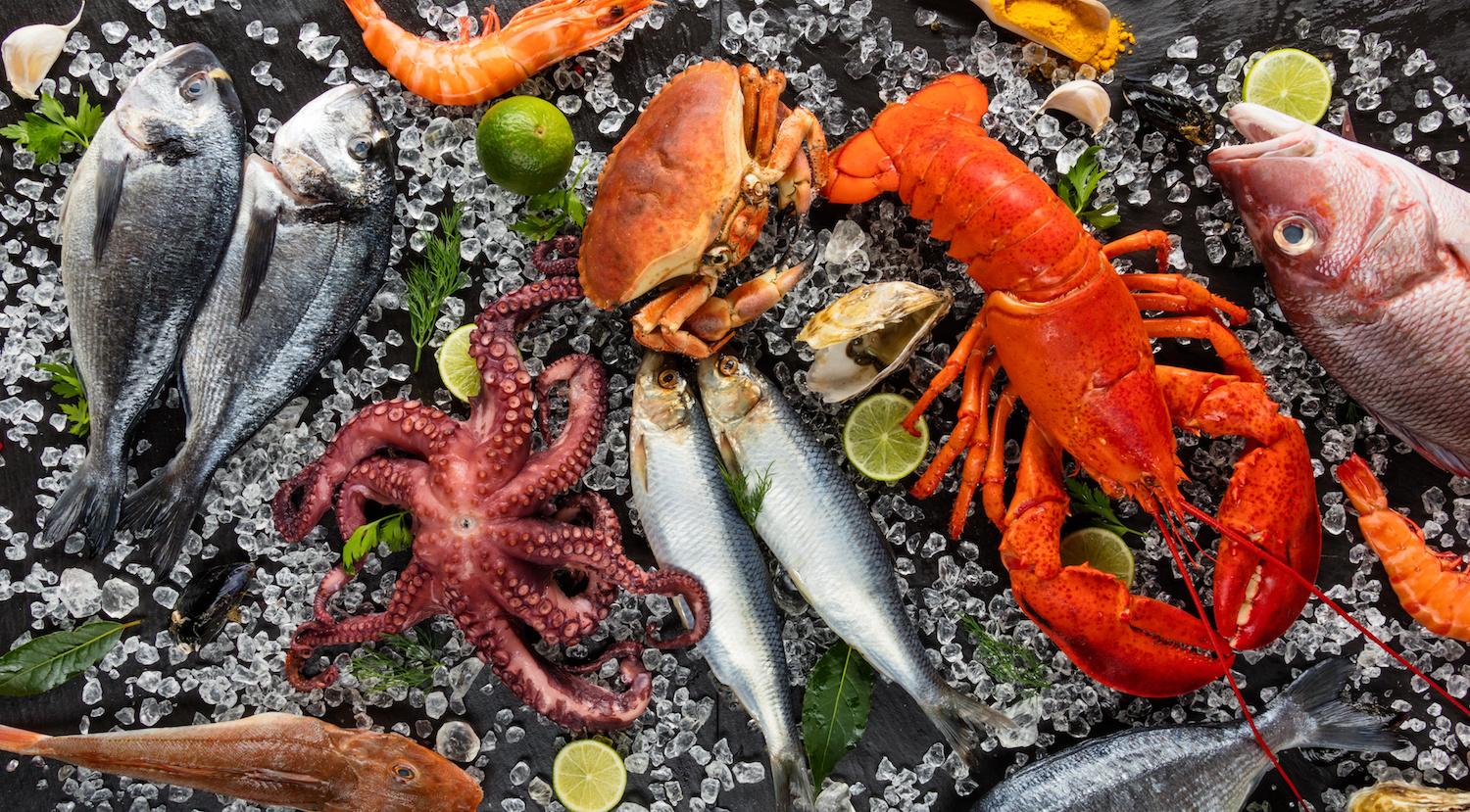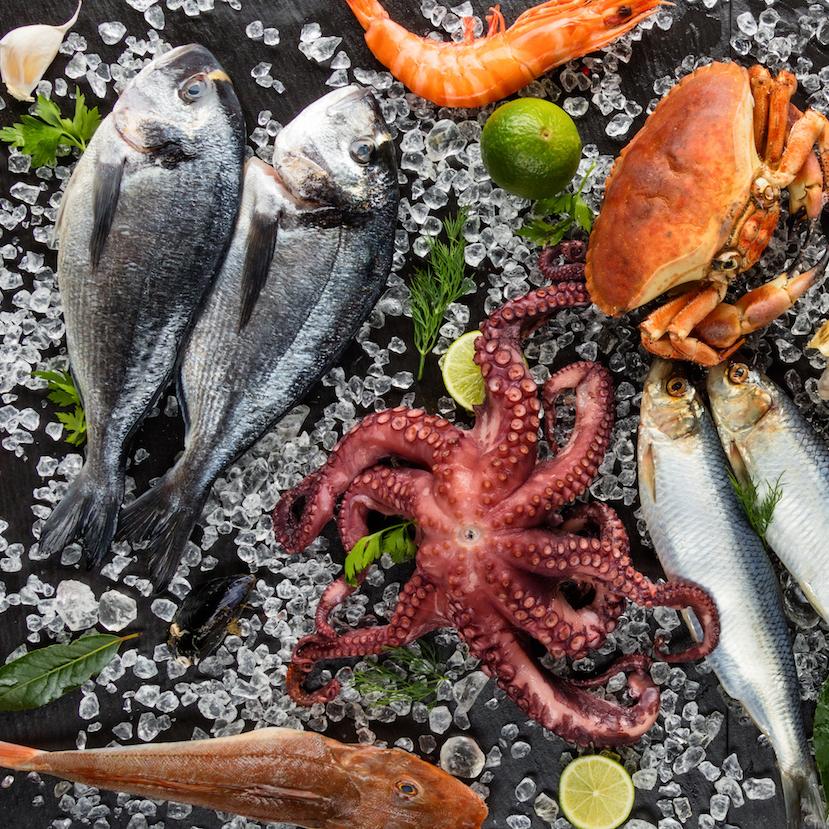Volvo Capping Cars’ Top Speed at 112 MPH - Does it Make Sense?


To burnish its already strong reputation for automobile safety, Volvo will cap its vehicles' speed limits by 2020. But is this a PR stunt or giant step ahead for public safety?
Swedish automaker Volvo announced last week that as of next year, the company will limit the top speed of all their cars sold globally to 180 kilometers per hour (or approximately 112 miles per hour). This is part of the company’s Vision 2020 initiative, the goal of which is for no one to be killed or seriously injured in a new Volvo by 2020.
According to the company’s press release, research done by Volvo finds that speed is a prominent gap in their ambition to completely end serious injuries and fatalities, highlighting that 25 percent of all 2017 traffic fatalities in the U.S. were caused by speeding.
A focus on vehicle safety is on-brand for Volvo, whose history of industry firsts makes for an impressive list. For example, in 1959 Volvo was the first car manufacturer to fit three-point safety belts as standard to its vehicles, and the company was also the world’s first car maker to put side-impact airbags into production.
Furthermore, this step to increase safety fits in nicely with one of three corporate responsibility pillars that Volvo has long espoused: its “role in society.”
To that end, Volvo’s president and chief executive Håkan Samuelsson says speed limitation is worth doing, “if we can even save one life.”
Limiting top speed is not unprecedented, however. For some time, German auto manufacturers, BMW, Mercedes and Audi, have had what is described here as a “gentleman’s agreement” to limit the top speed of their cars to 155 mph. The agreement was officially reached in order to reduce fatalities, but the suggested real reason was to appease German politicians who were angling for speed limits on the country’s famously speed limit-free autobahns.
Similarly, as long ago as the 1970s, the car industry in Japan self-imposed a speed limit, also like Volvo’s, of 180 km/h, on all cars sold within the country’s domestic market, a limit that still stands today. Though this came into effect to address lawless speeding, it’s not entirely clear, according to this Japan Times article discussing how the industry arrived at this particular top speed limit - though it’s suggested this was as fast as most Japanese cars could go at the time.
Volvo doesn’t explain why the company picked 180 km/h (112 mph) for their self-imposed top speed limit either, but it’s still plenty fast enough. It’s close to 50 mph over the 65 mph speed limit imposed on many United States freeways; and if you are caught going this fast, you’d likely have your license suspended at the very least. Furthermore, you’d still not be guaranteed to walk away, or even survive an accident at that speed. So is it a significant step in practical terms?
Already, the move has been criticized by some as a public relations exercise, arguing Volvo has picked a limit that has no real logic to it. Still, whatever reason the company settled on 112 mph, perhaps it’s a line in the sand and good a place to start. It is certainly safer than driving at 155 mph; just consider the fact that energy is proportional to speed squared.
Indeed, limiting speed is not the company’s end-game. Volvo says in the March 4 press release that they want to start a conversation about whether car makers have an obligation to install technology that changes driver behavior, indicating that further to implementing a top speed limit, the company wants to take a leadership position with regard to other safety technologies.
For example, Volvo is looking into implementing smart speed controls in the future, whereby geofencing technology could automatically limit speeds around schools and hospitals - environments where excessive speed is particularly hazardous. In addition, Volvo says it will present ideas to tackle the problem of intoxication and driver distraction at a safety event in Gothenburg, Sweden on March 20th.
Of course, Volvo isn’t unique in employing driver assistance technology to enhance safety. Most manufacturers now offer aids on higher specification models such as lane departure warning and rearview blind spot detection, while some car makers employ technology that will automatically add braking force if a driver isn’t reacting appropriately to a hazard ahead.
That said, limiting all cars sold globally to a top speed as 112 mph is an industry first as far as we can tell and maybe Volvo risks some sales by doing so. Some customers may choose the 155 mph German alternatives to a speed-restricted Volvo, since it may be seen by some as a big-brother approach they would prefer to do without.
However, maybe because Volvo’s historical brand identity has been built around safety, the company figures their typical customer will be happy to see them take the step on limiting the top speed. After all, they will be limited to a pace which remains a fairly generous one in any case.
Image credit: Blondinrikard Fröberg/Flickr
How Corporate Social Investment Can Transform Women’s Health


International Women's Day is a reminder that too often, the particular medical needs of women and the crucial role of women’s health in society are overlooked - but a fresh approach our guest author calls "corporate social investment" is a step in improving women's healthcare worldwide.
Women are the heart of the family, leaders in our businesses and drivers of the global economy. As the Liberian peace activist and Nobel Prize winner, Leymah Gbowee, puts it, “Women are the ones that bear the greatest burden. We are also the ones who nurture societies.”
Yet all too often, the particular medical needs of women and the crucial role of women’s health in society are overlooked. In many places, talking about “women’s issues” is still taboo.
Millions of mothers worldwide, for example, still do not have access to the pregnancy and childcare information they need to keep themselves and their families healthy. According to the WHO, around 830 women die every day from preventable causes related to pregnancy and childbirth, like severe bleeding and infections (often after childbirth), high blood pressure during pregnancy (pre-eclampsia and eclampsia) and complications from delivery. Without greater investment in improving these outcomes, “female empowerment” becomes nothing more than an abstract slogan.
In high-income countries, the WHO estimates that virtually all women have at least four prenatal care visits, are attended by a skilled health worker during childbirth and receive postpartum care. In 2015, only 40 percent of all pregnant women in low-income countries had the recommended prenatal care visits. Poverty, lack of information, location, poor services and cultural practices are all contributing factors as to why women are not getting the face to face interactions they need. So how can we tackle this massive challenge together?
Leveraging the private sector's resources is crucial for women's health
In an age of social media campaigning and movement-building, it is easy to focus on grassroots actors and organizations as the only meaningful drivers of social change. A common perception is that “bottom up” mobilization and small-scale activities alone can deliver the right results for communities.
Yet the reality is that neither “bottom up” change driven by citizens, nor “top down” delivery to passive consumers is alone enough to tackle big global challenges. You need both the initiative of grassroots action, and the resources and infrastructure of governments and large private sector organizations. Big companies with a global presence can still be - and must be - genuine stewards of “innovation for good”.
Indeed, without the accelerated environmental, social and governance (ESG) investments from blue chip companies in recent years, significant change in many areas of our lives would simply not have been possible. The key is finding the right strategies to leverage a company’s reach, capitalize on the power of its staff and in-house expertise and use its privileged position to convene effective global partnerships.
Take global health: first, citizens may be required to make changes, for example, in their diet and health, to vaccinate children and to seek out more regular care such as prenatal visits. But second, those services must also be present, accessible and affordable even in hard-to-reach circumstances. “Bottom up” change will therefore never be enough on its own.
As technology transforms the landscape of personal health management and health care delivery, the role of companies is increasingly to build platforms for citizens to stand on - reaching people wherever they are. At Johnson & Johnson, for example, we have the resources to discover, develop and deliver exactly these kinds of tools. We are focused on creating health platforms that help shift societal behavior, and nowhere is this kind of intervention more necessary than in women’s health.
Why technology can improve the delivery of vital healthcare services
Mobile technology has incredible potential to reach moms and families in the most remote corners of the world with information about their health, allowing them to make better decisions for themselves and their children. In South Africa, for example, Johnson & Johnson has partnered with the National Department of Health and the excellent African nonprofit Praekelt.org to deliver a service called MomConnect to millions of expectant mothers across the country.
The digital platform, a flagship program of the National Department of Health and formally integrated into the health system through 95 percent of clinics, sends free weekly messages via SMS or WhatsApp containing medically reviewed, culturally relevant information developed by BabyCenter and local experts. Since 2014, MomConnect has registered over 2.5 million pregnant women at their first prenatal appointment - the highest population coverage (63 percent) of any program of its kind globally. Mothers can also respond to any message with their specific questions, compliments or complaints – accessing a help desk that manages 1,200 incoming messages per day.
Providing a woman with such information can empower her to manage any health issues more independently, decreasing her dependence on face to face interactions. Yet crucially, the ultimate aim will always be to encourage her to seek help from a trained health care practitioner when necessary. Here, the digital platform should be seen as a complement to, not a replacement for, frontline delivery of care. Encouraging women to connect with local health workers via a mobile service is one thing, but it also requires skilled frontline health workers to be available at that place and time.
NurseConnect, developed as a companion service to MomConnect, speaks to this challenge by providing key support – messaging, a mobile learning platform, and a help desk - for nurses and midwives in the South African public health system. It has registered over 26,000 nurses and midwives since 2016 across more than 1,700 facilities.
And by allowing the MomConnect user to provide feedback on the services she receives at clinics and to ask questions about her pregnancy and newborn child through a government help desk, the digital platform itself works directly towards improving the quality of real world care.
Through this model of offering informative digital solutions for users while also driving greater investment in targeted health care provision - helping to train frontline health workers to meet the needs of the local population - global health actors can create delivery systems across the world that are cost efficient enough to be scalable, but bring enough face to face engagement to be life changing.
The truth is that change at this scale is only possible when corporate entities, governments and third-party organizations come together in partnership - developing and rolling out new technological solutions using existing infrastructure and joined-up financing strategies. And if we get this right, achieving bottom-up change by empowering people with better information about their health while also ensuring effective top-down delivery systems, the rewards for women’s health, and for society at large, will be enormous.
Editor's note: Follow today's International Women's Day conversation on social media with hashtag #InternationalWomensDay.
Image credit: Unsplash
Brave Girl Rising: A Short Film Symbolizing International Women’s Day


Making its debut on International Women’s Day, Brave Girl Rising tells the story of a 17-year-old girl’s determination to continue her education despite the hardships occurring while growing up in one of the world’s largest refugee camps.
Making its debut on International Women’s Day, the nonprofit Girl Rising is releasing a 20-minute short film, Brave Girl Rising, which tells the story of a 17-year-old girl’s inspiring commitment to continue her education despite the hardships occurring while growing up in one of the world’s largest refugee camps.
Nasro, the story’s heroine, fled violence in Somalia with her grandparents and settled in the Dadaab camp in nearby Kenya when she was just 7 years old. Ten years later, Nasro, who still calls Dadaab home, is pursuing an education in hopes of one day becoming a doctor.
While she shines in the film as a passionate young changemaker who inspires her peers through her resiliency and commitment to learn, Nasro’s pursuit for education has not come easy. Barriers like sexual harassment, gender-based violence, forced early marriage and stubborn social norms constrain many of Nasro’s would-be classmates from chasing a future outside of the limits of Dadaab. Girls in Dadaab are often forced into dangerous situations during their miles-long treks to retrieve basic necessities like water, food and firewood for their families.
While the film spotlights the tragedy and pain Nasro has suffered in her young life, it also sends an inspiring message that hope and the dream to better your livelihood can ultimately prevail. Nasro is a model of inspiration for millions of young refugee girls in similar situations.
The film was made in collaboration with the International Rescue Committee, whose widespread women empowerment programs in Dadaab include a club where adolescent girls, Nasro included, join forces to discuss their experiences and learn about sexual and reproductive health in a safe space.
Girl Rising, IRC and Citi, the film’s primary funder, teamed up with HP and Amplifier to create a comprehensive communications campaign to support the film and the lessons it can teach all of us. The campaign features screening toolkits, curricula, a street art initiative and calls for action. This partnership serves as an example of how the private sector can work closely with nonprofits to push forward on gender equality through powerful storytelling.
“At a moment when 68.5 million people are displaced worldwide, around half of whom are women, this film brings much-needed awareness to the challenges faced by women and girls in crisis,” said Nicole Behnam, senior director for violence prevention and response at the International Rescue Committee. “Campaigns like this ensure the most vulnerable women are part of the global conversation, and show the importance of prioritizing their safety, education, and wellbeing."
Girl Rising, the creators of the film, utilizes its creative storytelling platform, social media campaigns, PSAs and partnerships with local organizations to reach various stakeholders and effect change.
The film shares the stories of nine girls defying the odds and breaking barriers in their search of a better life. The critically acclaimed film, featuring the voices of Kerry Washington, Anne Hathaway and Meryl Streep, has been translated so far into more than 30 languages.
Behind the pen of writer Warsan Shire, the esteemed former young poet laureate and daughter to Somali refugees, and the voice of narrator Tessa Thompson, a rising young actress featured in blockbusters like Creed 2 and Thor, Brave Girl Rising packs similar star power.
Releasing the film on International Women’s Day (IWD) fosters the perfect opportunity to amplify the voices of girls and women like Nasro - the day has grown into a global platform upon which all of us can celebrate women’s invaluable and vibrant contributions to society as well as advocate for gender equality. While IWD may serve as a time to reflect on the progress that has been made in recent years toward achieving gender equality, it’s also a time to double down on commitments to ensure that women are continually given opportunities to advance and succeed in societies.
Watching the film is one of thousands and thousands of ways to reflect and celebrate International Women’s Day.
Check out IWD events near you, and follow the conversation on social media with the hashtag #InternationalWomensDay.
Image credits: Girl Rising/Facebook; GirlRising.org
The Business Case for Accelerating Gender Balance


As #BalanceforBetter is this year's International Women's Day theme, it is only appropriate that we make the business case for gender equality in the office.
#BalanceforBetter is a brilliant theme for International Women’s Day in 2019. We have reached a point at which people of all genders are becoming more aware that treating people based on stereotypes, as well as allowing for oppression based on historically and society-bred preconceived notions, are no longer tolerable.
Therefore, a focus on “balance” presents a logical approach. In many countries, the share of women in the workforce accounts for 40 percent or more. For five decades the feminist movement has been evolving and women have been gaining equality.
Yet for a millennial like me, 50 years seems like an excruciating amount of time to wait for change.
How can we get this ball rolling faster?
Advancing women at work will involve morphing what have long been persistent barriers to inclusion. Historically in the United States and Europe, white men have, and still do, hold the majority of senior leadership roles.
Take a moment to think about the reasons why this is the case - after all, our brains are fascinating in how they work. In a recent New York University study on why people trust strangers, it was found that our trust in them heavily relies on whether they resemble someone we already know. So trusting a white man to be in a leadership role makes sense based partially upon the fact that that’s what we’re used to seeing.
How do companies change the status quo? They can widen the pipeline in order to make it possible to promote more women. When you reflect upon a favorable experience you’ve had with a boss, is the first thing you remember the person’s gender? Or, is it the case that how the experience made you feel actually resonates with you more?
Regardless of gender, qualified candidates do exist. It’s up to all of us to encourage women to apply for leadership roles. The more the physical face of leadership roles changes, the quicker we can reprogram our brains into harnessing this aforementioned “trust” in strangers, therefore incorporating those more diverse experiences into how we perceive leadership.
Why we should change the face of business
Diversity is powerful. Organizations with a diverse labor force experience lower turnover, and as a result, develop a workplace culture that matches what many new entrants into the job market are seeking. Millennials are expanding into more entry- and mid-level roles across the labor force. As this is a generation determined to work within an organization that looks similar to the communities in which they live, it should be no surprise that nearly half of all millennials are pushing for more diversity and inclusion in the workplace.
In 2017, the World Economic Forum partnered with LinkedIn for its Global Gender Gap Index. Going beyond the moral case for gender equality, it is clear that gender parity also presents significant economic opportunity. Women and men are either graduating in equal numbers from universities, or there are even more women than men graduating in many countries around the world. For most of the globe's population, the higher skilled talent actually lies within women rather than men. If organizations do not ensure that women and men are being integrated in equal numbers, the end result could be a SWOT-analysis threat to growth.
Additionally, a McKinsey study found that if women contributed to GDP at the same rate as men, they could add $28 trillion to global GDP by 2025. Since McKinsey does not predict complete gender parity by that year, a more realistic, yet still progressive, pace for improving gender parity could still bring an additional $12 trillion to global growth.
Companies, and countries, who remain reluctant to include women across all roles in the labor force are missing out on productivity gains. The business case for organizations to balance gender parity equates to having an increased number of skilled applicants, more loyal employees and improved productivity and performance.
It only makes sense that today is a day to work on gender parity and a #BalancedforBetter global economy.
Editor's note: Follow today's International Women's Day conversation on social media with hashtag #InternationalWomensDay.
Photo option: Unsplash
Why Shifting Gender Balance in Wealth Brings Ripple Effects


As women take impact investing by storm, the ripple effects are leading to more women in finance assuming leadership roles, with more female entrepreneurs reaping the benefits.
As women take impact investing by storm, the ripple effects are leading to more women in finance assuming leadership roles, with more female entrepreneurs reaping the benefits.
Today, as the United Nations recognizes International Women’s Day 2019 with the theme #BalanceforBetter, the shifting gender balance in wealth shows that when women hold the reins of capital, the outcome is that investments that generate positive social and environmental impacts often win top priority.
Women are guiding female clients’ investments
By 2020, women are expected to hold $72 trillion in private wealth, or 30 percent of the total wealth in the U.S., a huge jump compared to $34 trillion in 2010, according to The Economist. Women will also become the largest beneficiaries of the $30 trillion intergenerational wealth transfer over the next 25 years.
As TriplePundit has reported, gender parity in the financial world is staggeringly poor, with Wall Street heavily dominated by men. Yet while less than 5 percent of women hold senior leadership roles in the asset management industry, impact investing is a striking exception. One-third of the 2017-18 ImpactAsset 50 fund managers are led by women and 41 percent of these funds’ senior management teams are females, according to researchers Suwen Chen and Richard T. Harrison of the University of Edinburgh Business School, writing in the Financial Times.
Supporting female-led start-ups
When that capital ends up in the hands of women, they often turn around and support other women. But there is still a steep hill to climb. As of October 2017, women made up just 8 percent of investing partners at the top 100 venture capital (VC) firms, according to the venture-tracking site Crunchbase.
And as research conducted by the analytics firm PitchBook and the advocacy organization All Raise concluded, female founders received only 2.2 percent of the $130 billion in venture money invested across the U.S.
Lisa Blau and Amanda Eilian, who founded Able Partners, a New York VC firm in 2016, set out to remedy this disparity by investing their own money — without harnessing any outside capital — in early-stage companies led by women.
As they told The New York Times, when they recently invited other women investors to a pitch event to showcase ten of the companies in which they’d already invested, they called the event “the anti ‘Shark Tank’ because everyone is already a winner. We’re just trying to bring more female investors to their cap table.”
The path towards more inclusive investing
These types of inclusive investing practices benefit not only women, but also entrepreneurs of color, according to a recent report from Arabella Advisors, New Venture Fund and JP Morgan Chase & Co. It noted that less than 5 percent of entrepreneurs backed by VC firms are African American or Latino, but that philanthropy had a role to play in unlocking capital in the quest to create an inclusive economy for all.
Arabella found that to address this problem systemically, individual and institutional investors must change how they make their investment decisions, such as increasing the diversity of who makes investment decisions in the context of an investor class that is predominantly white, male and elite-educated.
That diversity is represented by Invest for Better, a new national campaign and open-source, nonprofit impact investing website designed to help women overcome the challenges they may face in becoming effective impact investors.
To that end, Lorine Pendleton, a Portfolia Funds Investment Partner and member of women-focused Pipeline Angels has said on Invest for Better’s website, “I became an angel investor after learning that black entrepreneurs get less than 1 percent of VC funding. I knew the importance of funding and wanted to do something to help level the playing field.”
Women poised to close generational gap in socially responsible investing
The pressure for change is building. A study released this week by Swell Investing shows that women are poised to close the generational gap in socially responsible (SRI) investing. Among those approaching retirement (ages 55-64), 71 percent of women investors are interested in, or are currently investing in, socially responsible or impact investing strategies, compared to only 47 percent of male investors.
That interest in SRI remains high in all life stages, the study found, with 82 percent of mothers stating that companies have a responsibility to create positive social and environmental outcomes in addition to financial returns, versus 73 percent of fathers.
Women are also just as interested in returns, the study noted. Among investors who haven’t yet started investing in socially responsibly equities, 34 percent of women and 36 percent of men say more information about the financial performance of these investments would influence their decision to get started.
“This is not just a feel-good movement for women; it’s just as important for them to see a financial return on those investments,” Lily Bowles of Swell’s Portfolio and Impact Investment Team told 3p.
Editor's note: Follow today's International Women's Day conversation on social media with hashtag #InternationalWomensDay.
Image Credit: Women of Color in Tech/Flickr
African Development Bank Launches ‘Africa NDC Hub’ At UN Climate Summit


Africa Day, held last month within COP23 in Bonn, Germany, served as the springboard for the official launch of ‘Africa NDC Hub’, the African Platform for Nationally Determined Contributions (NDCs) designed to fight climate change. So far, the hub has 10 partners signed up to the initiative, including a number of United Nations’ agencies apart from The African Development Bank (AfDB).
As well as the official launch of the African NDC Hub, the day saw
a Ministerial dialogue featuring several African heads of State and debates by experts as COP23 celebrated the theme of ‘Africa Day’ at the UN Climate Summit in Germany.
The initiative from the AfDB, whose stated mission is promote sustainable economic growth and reduce poverty in Africa, is intended to help the 54 African countries fulfil their commitments under the Paris Agreement, and in so doing effectively to put their respective “NDCs into action” without neglecting their own development priorities.
“This platform is a response to requests made by various African countries,” stated Amadou Hott, AfDB’s vice president for electricity, energy, climate change and green growth, as he unveiled the new initiative to a gathering of Heads of State, ministers, policy makers and representatives of civil society, among others, from across the continent.
He added: “It should be seen as an opportunity to accelerate investment in climate action in Africa through NDCs.” The official asserted that it will facilitate “better coordination among partners to provide a collective and effective response”, for and by the whole of Africa.”
This platform was also touted as a “catalyst for concessional funding” for climate-related projects in Africa which will, in turn, help raise private finance. The initiative is viewed as timely, given that according to recent studies US$4 billion will be required to implement the NDCs.
While all 54 African countries signed the Paris Agreement, 43 have ratified it and 53 (the exception being Libya) have submitted their NDCs, 85% of which are conditional upon financial aid from abroad, while only 15% are on the basis of domestic budgets.
Africa is already the poor orphan when it comes to world climate funding, capturing less than 5% of the total. As such the announcement of this new platform was warmly welcomed.
To date, Africa NDC Hub has 10 partners other than AfDB. These include the African Union Commission (AUC), the Economic Community of West African States (ECOWAS), the World Wildlife Fund (WWF), the International Institute for the Environment and Development (IIED).
In addition, the United Nations Economic Commission for Africa (UNECA), the NEPAD Planning and Coordination Agency, the Food and Agriculture Organization of the United Nations (FAO), the United Nations Development Programme (UNDP), the United Nations Environment Programme (UNEP), and the secretariat of the United Nations Framework Convention on Climate Change, are on board.
Founded in 1964, the AfDB Group’s constituent institutions are The African Development Bank (ADB), The African Development Fund (ADF) and The Nigeria Trust Fund (NTF). Shareholders comprise 54 African countries (regional member countries) and 27 non-African countries (non-regional member countries).
Separately, the 6th Annual African Financial Markets Initiative (AFMI) workshop on local currency bond markets and financial sector development will take place from 22-24 November 2017 in Dakar, Senegal, with over thirty countries being represented.
The AFMI will present recent developments on African Financial Markets Database and hear updates on the African Domestic Bond Fund. And, the AfDB indicated that private sector participants there will also discuss the “importance of developing the institutional investor base for vibrant domestic debt markets in Africa.”
For more information on the AfDB see: www.afdb.org/en
Sky to eliminate plastics from its supply chain


Sky, the UK television, telecoms and broadband group, is to eliminate all single-use plastics from its operations, products and supply chain by 2020.
The company has announced the target as part of its Sky Ocean Rescue campaign, a project that it began in January 2017 to combat plastic pollution in the oceans.
More than eight million tonnes of plastic are said to be dumped and washed out to sea every year. Some of it is ingested by fish and other marine creatures. It enters the food chain and ends up imperceptibly on the meal table.
The problem was illustrated vividly early this year when a whale was found dying off the Norwegian coast with 30 plastic bags in its stomach.
Plastic takes hundreds of years to break down, so if Christopher Columbus had tossed any overboard on his way to America in 1492 fragments of it would still be in the Atlantic today.
A scientific estimate is that without action the plastic in the oceans will weigh more than all the fish by 2050.
In response to the scary facts and figures, Sky has already removed plastic water bottles, straws, cups and cutlery at its European sites, thus slashing its plastic bottle usage by more than 300,000 since January.
Sky’s first action after its latest decision has been to exclude single-use plastic from all packaging. The second is to ensure that all new products will be free of single-use plastic by the end of 2017.
The company will widen the effort to help its business partners, its suppliers and other businesses and start-ups to adopt similar policies to eradicate single-use plastic and keep it out of the oceans.
It is earmarking £25m ($33m, €28m) to fund these programmes during the next five years.
WWF is to partner Sky in another campaign, soon to be started, aimed at protecting and enhancing the coastlines of the UK, the Irish Republic, Germany and Italy.
Independently of the campaigns, environmentalists are suggesting a deposit return programme for the 36 million plastic bottles bought in Britain every day, of which fewer than half are recycled.
Altogether 35 schemes are operated worldwide. A scheme in Norway hoisted recycling rates to 96 per cent.
Tanya Steele, WWF-UK’s chief executive, said: “Businesses, governments and individuals all have a role in reversing the shocking decline in the health of our oceans – for our own wellbeing, as well as for future generations.”
Besides its ocean effort, Sky is concentrating on a broad range of ethical concerns.
It calculates its carbon footprint at the end of every financial year, assessing how it has minimised greenhouse gas emissions from industrial activity, electricity use and business travel.
Sky is committed to reducing its environmental impact by limiting its paper use as well as ensuring that the paper comes from responsible companies and is made with timber from legally harvested and sustainably managed forests. It insists that all internal office paper is made from recycled fibre.
Recycling applies too to old Sky equipment. Customers are told they can return it free to the company for recycling.
On the wider social canvas Sky has promised to do what it can to promote health and education services, equality, prosperity, food security and sustainable water and sanitation management.
The ethical principles Sky has adopted for its own conduct are applied to its suppliers, including labour, health, safety and human rights conditions.
The company says proudly: “At Sky we are building sustainable business because we believe this is the best way to achieve lasting success and create value for shareholders.
“This is what we call seeing the bigger picture and it is part and parcel of everything we do.
“We strive to be the best for our customers, our 18,000 Sky people, our suppliers, as well as the local communities in which we live and work.”
Jeremy Darroch, the Sky Group chief executive, said: “We need to tackle one of the biggest man-made environmental disasters facing our planet – plastics in the ocean. The statistics are shocking.
“At Sky we care about the environment and believe we have a responsibility to act on issues that matter to our customers.
“Ten years ago we were the first media company to become carbon-neutral, and looking to the next ten years, we want to use our voice and our reach to have a positive effect on ocean health.”
Made in Europe label no guarantee of fair wages


Some of the world’s most popular fashion houses have been urged to uphold labour rights in their supplier factories in eastern and south-eastern Europe.
The Clean Clothes Campaign, the Amsterdam-based champion of employment standards in the garment and shoe industry, has made the appeal to retailers including the UK company Triumph, the Italian multinationals Benetton and Geox, the Danish group Vero Moda, and Esprit, which has headquarters in Germany and Hong Kong.
A report by the campaign, known for highlighting abuse by Asian manufacturers, now targets suppliers in the former European communist bloc.
The Europe’s Sweatshops report says the employees are experienced and qualified, but underpaid, and many brands label the products Made in Europe, suggesting good conditions.
However, average monthly wages vary from €89 ($105, £79) in Ukraine to €374 in Slovakia. The campaign estimates €438 as the monthly living wage to support a Ukrainian family.
A Ukrainian woman employee is quoted as saying: “Sometimes we simply have nothing to eat.” A Hungarian worker says: “Our wages are just enough to pay for energy, water and heating.” Serbians say they are threatened with dismissal if they protest about summer working without air conditioning and access to drinking water and continually having to work on Saturdays.
Other eastern European workers complain of unhygienic conditions, exposure to heat and toxic chemicals, unpaid and illegal forced overtime and abusive treatment.
Only the Swedish multinational H&M has promised to insist on living wages at its supplier factories worldwide. The policy, announced in 2013 to be implemented in 2018, would be “ground-breaking”, says the campaign, but H&M has redefined its intentions, committing itself to introduce “mechanisms” enabling employers to pay living wages to at least 80 per cent of the supply chain workers.
Improving pay could increase costs and, eventually, shop prices, prompting customers to switch to cheaper suppliers. The campaign responds that the answer is concerted wage policies by all retailers.
Ineke Zeldenrust, the campaign’s international co-ordinator, said: “Brands could influence these wages by reassuring governments that raising minimum wages will not make them leave, investing in long-term relationships with their suppliers and assuring them that they will continue to receive orders even if prices go up, and taking direct responsibility for wages through direct payments on top of their orders to their supplier factories.”
Brighter workplace news is that most of the requirements under the binding Bangladesh Accord on Fire and Building Safety, agreed by brands, retailers and trade unions, have been fulfilled. All conditions are to be met by May 2018.
Elsewhere – in Indonesia, Cambodia and Turkey – workers have inserted messages into garments saying: “I made the item you are about to buy but I didn’t get paid for it.”
The claim is from workers whose factories closed suddenly, leaving them jobless and owed severance money and pay.
Feeding Olympians sustainably at 2020 Tokyo Games


A drive has been started to ensure that all fish and seafood at the 2020 Tokyo Olympics comes from sustainable sources.
If it succeeds, the achievement will be seen as a huge international coup for activists promoting ethical standards in an industry dogged by poor transparency and supply chain traceability.
The effort is headed by the cash-rich David and Lucile Packard Foundation, the California-based NGO formed by the Hewlett-Packard founder and his wife to support non-profits, many of them focused on restoring the planet’s natural systems.
The Olympics campaign is part of the foundation’s push to persuade Japanese businesses to insist on sustainable fish and seafood.
In recent years the foundation has contributed millions of dollars to organisations that encourage sustainability in the industry.
Last year it granted $1.15m (£852,000, €980,000) to Seafood Legacy, a Tokyo group advocating partnerships between businesses and sustainability NGOs, and $975,000 to the Oregon-based Ocean Outcomes, an international non-profit with similar aims, to implement fishery improvement projects in Asia.
The foundation’s Japan objectives have focused on helping businesses and NGOs to create a sustainable fish and seafood market, rewarding fisheries for ethical practices, and influencing international policies against illegal catches.
Although the foundation leads the Olympics campaign, it has recruited many participants, believing the message is more effective if it comes from various groups.
In the US, a partnership of fish and seafood industry representatives, national governments and NGOs has been created to share best practice and collaborate on fighting illegal activities.
The Seafood Alliance for Legality and Traceability, being known as Salt, will concentrate on supply chain transparency and traceability.
Tobias Aguirre, chief executive of FishWise, a California group promoting clean oceans, which is co-ordinating the alliance, said: “Salt will catalyse solutions that transform how the seafood industry and governments collect, share, verify and ultimately utilise data in the pursuit of sustainable fisheries.”
The alliance has substantial backers. The government Agency for International Development is giving $1.1m for the first year, and at least $1m a year is coming from the Walton Family Foundation, the social improvement body in Arkansas established by Walmart’s founders.
The Walton money will go to programmes with Salt involvement in Peru, Chile, Mexico, Indonesia, Japan and Spain as well as the US.
Teresa Ish, the foundation’s oceans programme officer, said: “Traceability is a critical component of an efficient, modern and sustainable seafood industry.”
Salt members are now meeting to formalise policies.
Ethical advertising is a key emerging CSR issue that can’t be delegitimised


Ethical advertising has arguably been the big business ethics issue of recent weeks, with Paperchase’s decision to rule out future promotions in the Daily Mail eliciting the full acerbity of Fleet Street.
It is a new issue to the CSR agenda but one swiftly and firmly established thanks to the ethical consumer campaign Stop Funding Hate (I am a Non-Exec Director). As we commence 2018, you can guarantee there are marketing and CSR departments talking about brand, values, and the suitability of advertising channels, perhaps for the first time.
Given the press furore over Paperchase’s decision, it would be understandable to consider it a controversial issue best avoided, but this is a key emerging CSR issue that can’t be ignored or delegitimised. Concern about the negative impacts of 'fake news' and 'hate news' on society is growing, and any business purporting to make a positive contribution to society must look at what its advertising procurement is funding.
To quote Zeid Ra’ad Al Hussein, United Nations High Commissioner for Human Rights, “History has shown us time and again the dangers of demonizing foreigners and minorities…it is extraordinary and deeply shameful to see these types of tactics being used…simply because racism and xenophobia are so easy to arouse in order to win votes or sell newspapers.”
In 2016, Leicester University’s Centre for Hate Studies warned that a surge in hate crime against migrants had been “fuelled and legitimised” by the media, while Cambridge University highlighted that mainstream media reporting is “contributing to an atmosphere of rising hostility towards Muslims in Britain.”
In 2012, the Leveson Inquiry into UK press standards concluded that “there are enough examples of careless or reckless reporting to conclude that discriminatory, sensational or unbalanced reporting in relation to ethnic minorities, immigrants and/or asylum seekers is a feature of journalistic practice in parts of the press, rather than an aberration.”
The issue is increasingly relevant to business as more market themselves on values and social purpose, and seek to put these values into practice. Advertising that funds and risks placement next to hateful and divisive content does not sit well with most company values and CSR commitments. Or with the public, with a recent YouGov poll finding that 58% believe ‘companies should withdraw their advertising if it placed next to content they think is racist, sexist, homophobic or xenophobic.’
It is also applicable for signatories to the UN Global Compact, who have committed to “avoid causing or contributing to adverse human rights impacts through their activities and relationships.”
Many businesses are already taking action. Unilever has stated it has “strict controls in place to ensure its ads appear only in media — both online and offline — that are fully consistent with its brand values.”
Numerous businesses have responded positively to the Stop Funding Hate campaign, including Lego, Paperchase, the Body Shop, JOY, the Phone Co-op, Ecotricity, Good Energy and more; all have committed to exclude certain publications from advertising procurement.
The Co-op Group takes a different approach, opting for engagement rather than exclusion. It seeks to influence editorial as an advertiser, committing to “challenge those views expressed in print which we and many of our members believe are incompatible with our values…using our contacts with publishers at every level to make the case for change.”
So how should ethical advertising be adopted as part of CSR commitments? Stop Funding Hate recommends a materiality approach that excludes the worst offenders as identified by respected and independent authorities (an approach used by many socially responsible investors). In this instance, publications most implicated in the promotion of hate and division.
For example, in 2016, the United Nations High Commission for Refugees reviewed media outlets across five European countries and concluded that, of all the publications surveyed, the Sun and Daily Mail exhibited a “hostility” to refugees and migrants that was “unique”.
The Sun and Daily Mail were again singled out when accused of “fuelling prejudice” in a 2016 report by the Council of Europe on hate speech and rising racist violence. The report highlighted discriminatory coverage towards Muslims, migrants, travellers and the LGBT community, and warned that “fuelling prejudice against Muslims shows a reckless disregard, not only for the dignity of the great majority of Muslims in the United Kingdom, but also for their safety.”
Ethical advertising is a particularly pertinent issue for the UK, with the UN stating “Elsewhere in Europe…there has been a similar process of demonization taking place, but usually led by extremist political parties or demagogues rather than extremist media.”
The Stop Funding Hate consumer campaign for ethical advertising is comparable to other successful consumer campaigns, from the Living Wage and Fairtrade to animal welfare standards. All started as ethical consumer campaigns, quickly became CSR and SRI issues, and mainstreamed soon after. Ethical advertising is already well down that road.
Colin Baines is Investment engagement manager, Friends Provident Foundation, and former ethics adviser and social goals campaigns manager, Co-op Group and Bank